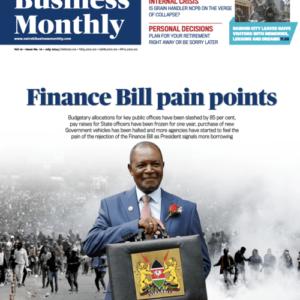BY BENARD AYIEKO
Kenya has a robust financial sector in Africa. In fact, last year the World Bank Country Director for Kenya Mr. Diariétou Gaye said that Kenya has the third largest financial sector in sub-Saharan Africa that makes a significant contribution to economic growth and job creation. To acknowledge efforts being put in place to make the financial sector flourish, the World Bank Group approved a $37million in form of International Development Association credit to strengthen the legal, regulatory and institutional environment of Kenya’s financial sector. Main players in Kenya’s financial sector are the commercial banks, non-bank financial institutions, mortgage companies, forex bureaus, development finance institutions, pension schemes, insurance companies, private equity firms, Savings and Credit Co-operative Societies (Saccos) among others.
Even though we have witnessed robust activities in the financial sector, so little is being amplified with regard to the role of Saccos in the economy which has over 16,000 societies with more than 14 million members making it the largest Sacco movement in Africa. Of the total savings mobilised and loans advanced by Saccos in Africa, the subsector in Kenya contributes nearly 62% of the savings and 65% of the loans thus making it the most influential Sacco movement in Africa. Currently, over 30 million Kenyans constituting 67% of the entire population, depend on the co-operative related activities, directly and/or indirectly, for their livelihoods. Furthermore, Saccos control slightly over 30% of Kenya’s GDP and accounts for 80% of the total accumulated savings.
Download Nairobi Business Monthly Latest Edition
Even though Kenya’s Saccos movement is celebrated globally, Saccos have failed to play a rightful and greater role in shaping the on-goings in the financial sector. The core business of Saccos is primarily to offer low-cost credit facilities from the members’ pool of funds realized through savings. The terms of borrowing these funds are agreed upon by members as enshrined in the by-laws or through decrees passed by members at the Annual General Meetings. It is this core function that makes Saccos compete for the same clients with banks and other financial institutions.
In seeking consumers of their credit products, Saccos tend to have an edge over banks since they offer flexible credit terms. For instance, just last year when the economy was overheating with high interest rates, banks were offering unsecured loans at an average annual interest rate of 30 per cent while most Saccos were offering loans at an annual interest rate of 12 per cent yet no single commentary or attention was drawn to the general public. Worse still, very few Saccos took this opportunity to heighten awareness of this fact within their membership. During that period, most banks re-priced their loans to the detriment of borrowers. This did not happen to those who had borrowed money from their Saccos. What this means is that despite the huge potential they have to steer the economy to the next level, Saccos have failed to position themselves strategically within the financial sector to play a greater role in shaping policies that are beneficial to over 30 million Kenyans representing 67% of the population benefiting from their activities directly and /or indirectly.
Saccos ought to play a greater role in shaping our monetary and fiscal policies too. Even though they significantly mop up excess liquidity in form of savings and offer start-up capital for SMEs, other players within the financial sector still consider them minnows in shaping major policies within the financial sector. For Saccos to play a greater role in shaping our financial sector, we need a stakeholder forum that will come up with means and ways of placing the movement at the heart of our financial sector to maximize the full potential that Saccos hold for socio-economic development. Policy makers and regulators should initiate regulations that integrate Saccos into the formal financial sector and access to national payment services, encourage fair competition, create new business opportunities for Saccos and shift focus to institutional development.
Finally, there is need for mainstreaming policies and regulations with the formal financial sector that will recognize both the position and role of Saccos in providing alternative financial services and promote financial inclusiveness. The accruing benefits will then permeate to the majority poor who need access to affordable credit to help them raise, maintain and improve livelihoods – those that Paul Collier refers to as the “bottom billion”.


